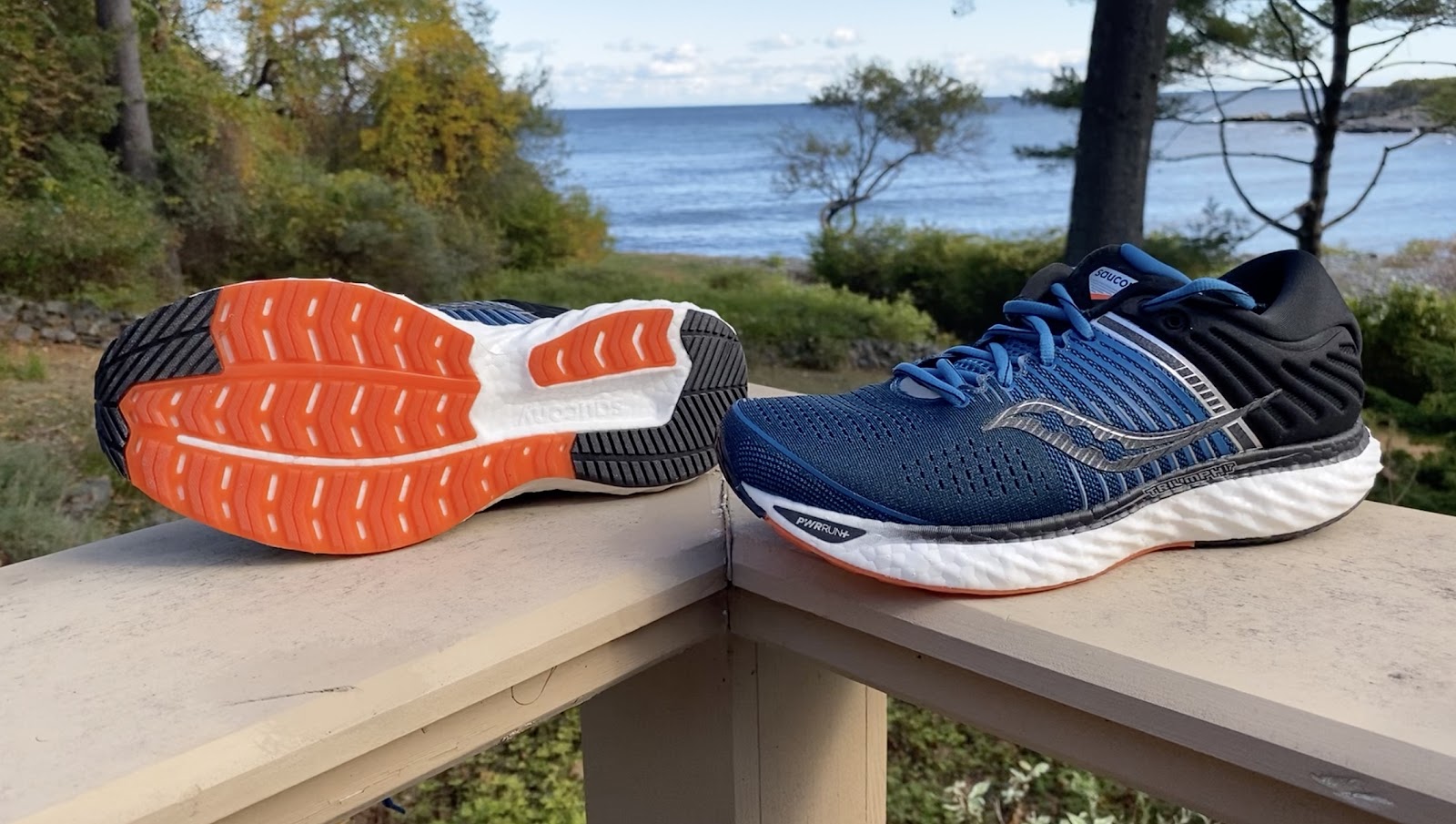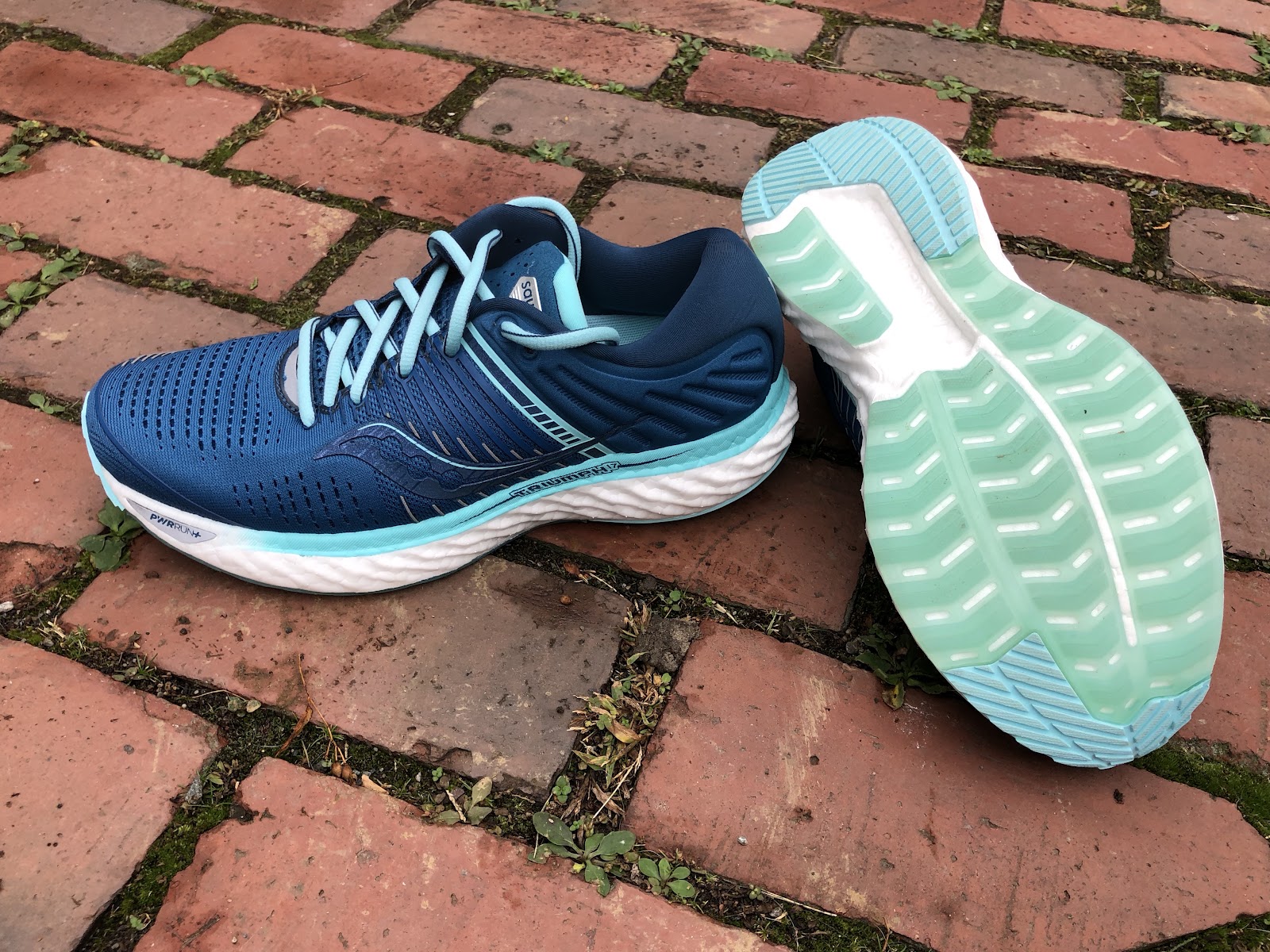Article by Jeff Beck, Canice Harte, Derek Li, Jeff Valliere, Sally Reiley, and Sam Winebaum
Saucony Triumph 17 ($150)

Introduction
Sam: The Triumph 17 is clearly a complete update. Dropping more than an ounce (over 30g) per shoe and $10 in price with about the same very well cushioned and big stack height of 33.5mm heel / 25.54mm forefoot and the same 8mm drop, the big news is a new midsole material PWRRUN+.
The new PWRRUN+ midsole is still TPU but instead of Everun as in the ISO 5 it is a new heated and expanded TPU bead based material called PWRRUN+.
PWRRUN+ is called out by Saucony as being 25% lighter than their “previous best” (assuming Everun) with a sensation of softness and response, 3x more durable and 3x more temperature resistant than EVA foams, 2x as flexible as standard cushioning, and with 5% more impact absorption than Saucony's "previous best" foam.
We will also see PWRRUN+ in the January Freedom 3. Other updates such as Guide 13, Kinvara 11, and Peregrine 10 get PWRRUN, a TPU EVA blend (RTR Saucony 2020 Road Preview, RTR Saucony 2020 Trail Preview)
 |
| Women's color (PC: Sally Reiley. Sally will join the review soon) |
Notice no “ISO” in the naming. They didn’t skip all the versions from the Triumph ISO 5! Saucony simplified naming to actual annual version and is also doing this for all upcoming models. Well not just marketing simplification, they also did away with the ISO Fit bands replacing them in the upper here with a soft engineered mesh with bootie tongue, thin overlays towards mid foot and a stout toe bumper similar to the ISO 5's and really the only upper hold over other than bootie tongue from ISO 5. The molded rear collars are unusually plush looking and feeling, and even somewhat stretchy covering a stout heel counter. The outsole combines areas of firm rubber at the heel and toe with softer crystal rubber elsewhere.
Clearly aimed at the heavy duty more cushioned and premium daily trainer segment, the Triumph 17 is very solidly built, copiously cushioned, with lots of durable rubber yet is reasonable in weight for its substance. It was one of the most exciting shoes I saw at the last Outdoor Retailer from a brand that clearly is shaking up all the shoes with new midsoles, uppers and streamlined naming. So let's find out what our testers thought.
Pros:
Canice: Cushion, fit and ride
Sam: Well controlled responsive bounce, plentiful cushion, easy any pace transitions, superb upper particularly the stretch soft rear collars
Jeff B: Plush upper breathes well, midsole/outsole provide lots of cushioning but still has some flex, and plenty of pop when the pace picks up
Derek: very comfortable upper, overall well balanced shoe with decent flexibility for its stack height
Jeff V: Controlled bounce, ample cushion, upper breathability and security
Sally: superlative in comfort, well cushioned with restrained bounce, flexible and active ride
Cons:
Canice: Lots of foam in the upper
Sam: far rear of sole overhang and weight (outsole and midsole), stiffish front of mid foot flex point
Jeff B: Tube laces feel like they are coming untied, even if they aren’t
Derek: padding around the heel seems a bit excessive, even for a premium daily trainer
Jeff V: Laces, fit is snug on met heads if not careful with lacing, a touch heavy
Sally: a bit heavy



















